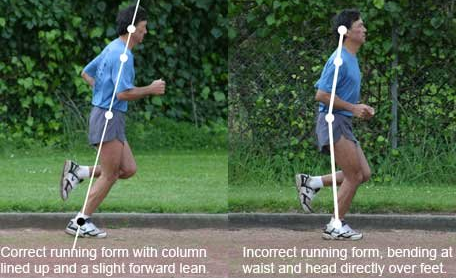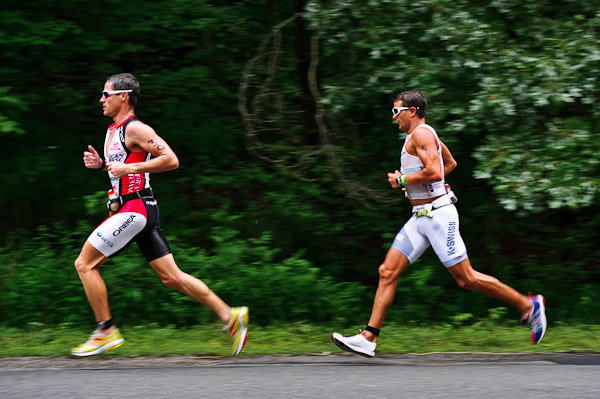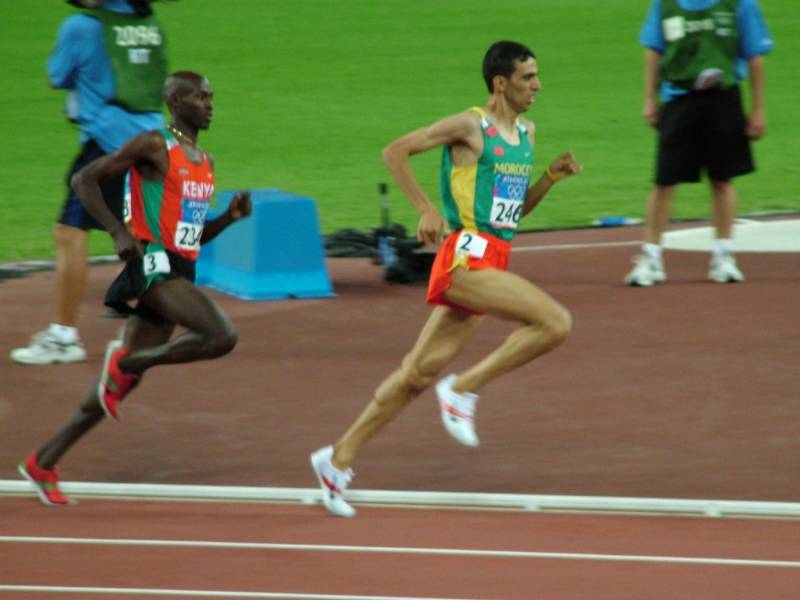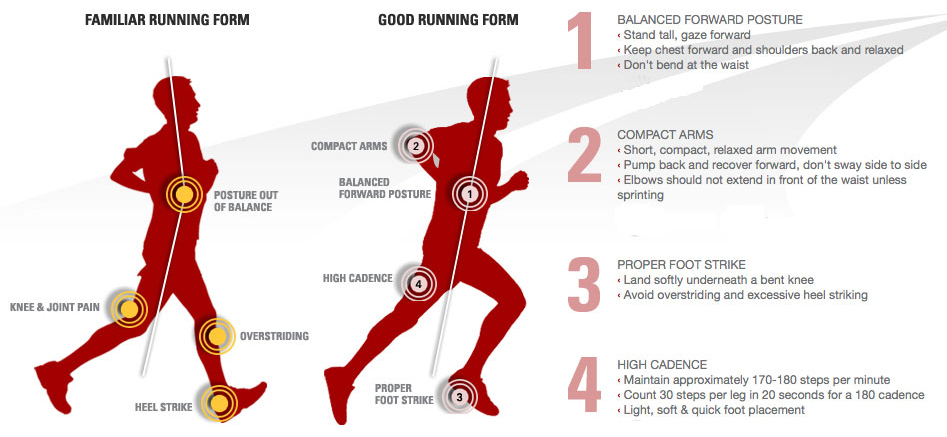I’ve used a few simple techniques to help a few of my clients with their running technique. These ideas have also helped me overcome a long-term bout of heel and Achilles trouble.
My clients often hurt when they ran so if nothing else, I figured they needed to run differently somehow. There was no guarantee that what I would show them would solve their problems but clearly the way they were running wasn’t quite working.
The following are drills and cues that I’ve used. Effective cueing can be challenging. I have in my mind a movement a feeling and an experience that I’d like you to have. I have to translate what I feel into English and transmit that message to you. My words may hit the mark or you may have absolutely no idea what I’m talking about!
Hop up and down.
Hop up and down. How do you land? On your heels? Most people land on their toes and to some degree their heels settle to the ground. It happens naturally. Your probably don’t need to think about it too much. In this way, we effectively dissipate the impact forces and avoid too much jarring and banging into the ground.
Run in place.
Now run in place–quickly! Again, how do you land? I think most people land similar to the way described above. It’s a light landing on the toes, not heels first. This is pretty much one-footed hopping.
Where do your feet land? Directly under your hips. That’s about where we want the feet to land. In contrast, what we don’t want is for your feet to fling out in front and slam into the ground. To that point…
Quick Pace
Overstriding is a frequent issue in injured runners. By overstriding the foot lands out in front of the runner and he or she slams hard into the ground with every foot fall. This can cause lots of stress to various tissues and joints and it’s likely a cause of pain.
By running at a quick(er) pace we facilitate the feet landing under us, not out in front. We create shorter loading times of the bones and joints and thus reduce the stress that may be causing our pain. It’s difficult to overstride with a quick cadence.
For a most runners this means consciously picking up the pace. This can feel awkward at first and may feel inefficient. One way to start to adjust your cadence is by using a metronome when you run. Start at your normal pace and sync the metronome to your pace. From there you can up the beat and match your pace to the metronome. This takes time and practice. If it’s important then you’ll do it.
Again, this all may feel very strange–and it should. After all, if our current chosen running technique is causing pain, then it stands to reason that a new and better running technique should feel weird. As with any new skill, it won’t feel strange forever.
Lean forward from the ankles.
 Learning to lean from the ankles–not the hips!–is important. By leaning from the ankles we sort of fall forward. We keep the hips under us, not poked out behind. When leaning from the ankles it’s difficult to overstride and slam the foot into the ground. Here’s a drill to learn how to lean from the ankles.
Learning to lean from the ankles–not the hips!–is important. By leaning from the ankles we sort of fall forward. We keep the hips under us, not poked out behind. When leaning from the ankles it’s difficult to overstride and slam the foot into the ground. Here’s a drill to learn how to lean from the ankles.
Run tall. Keep eyes on the horizon.
The simple cue to “run tall” seems to work well for a lot of runners. I’ll keep it simple and leave that phrase as is.
Keep your eyes on the horizon. This works well to help keep you tall. Your body tends to go where your eyes go. If you stare at the ground then you’re likely to slump forward. You won’t be running tall. Learn to use your peripheral vision to see the ground. The guys below are running tall and gazing out.
Run lightly. Quick pace. Lean from the ankles. Run tall. Eyes on the horizon.
Here’s a good graphic.
I’m not going to say a lot more other than I like the information presented here:
Skipping
Finally, here’s a skipping drill that may help you get a feel for running tall, running lightly and not pounding your heel into the ground. My hope is that this drill will transfer to your actual running. Skipping involves an exaggerated running gait and you don’t actually want to bound and prance to an extreme degree.




It is nice to run without pain.